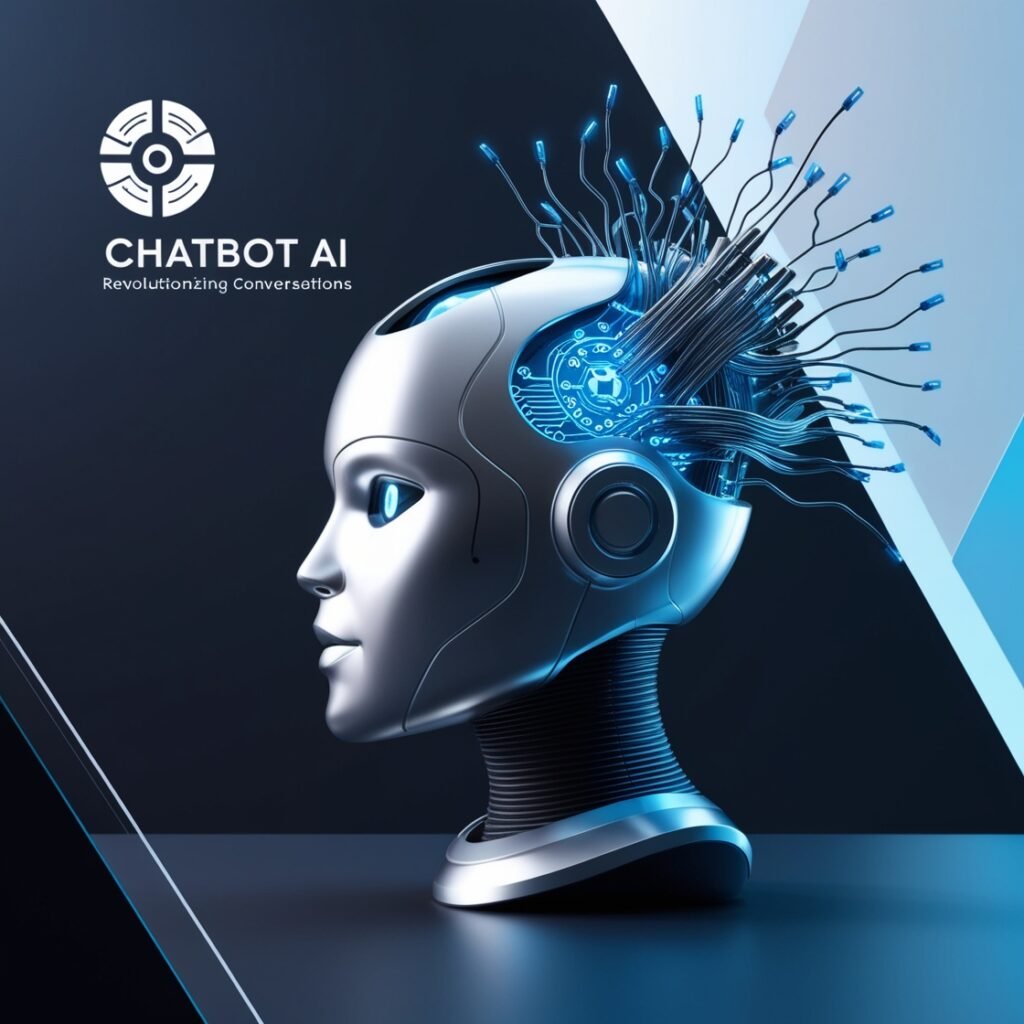Introduction
AI Chatbots can be described as the application of artificial intelligence towards developing software systems with features of conducting human conversations. Such bots can engage with the users through text or voice, in that they can understand natural language queries to give suitable replies. The current chatbot AI enhancement is made possible through the application of natural language processing, machine learning and deep learning techniques.
H&M and Sephora are some of the firms that have incorporated the use of chatbots in responding to client queries, product recommendations and purchases, to enhance on efficiencies and reduce costs. Nonetheless, a 2020 Gartner study that was conducted showed that 40% of users who engage in chatbot interactions experienced some problems that led to the abandonment of the chatbot, implying that, chatbot designers and trainers need to work extra hard to ensure that these failures are corrected.
What is Chatbot AI?
Chatbot AI means the artificial intelligence software that enables users to communicate with computers via text messages or voice. These bots are commonly combined within websites, mobile applications, and customer service channels to help the users and answer their questions. Chatbot AI usually depends on several technologies such as NLP and machine intelligence in the interpretation of the inputs provided by the user and formulation of the corresponding responses.
Probably one of the most successful uses of chatbot AI is in the sphere of customer service: companies including Sephora and H&M have their bots to answer frequently asked questions and guide customers through the purchase. Nevertheless, there have been some barriers as seen in the following: A recent Gartner study conducted in 2020 showed that about 40% of the users gave up on the chatbot interactions because of the poor response. This shows that there must always be adaptation and training for these current chatbots to make the grade and improve upon customer experiences.
Can Chatbot be Free or Paid?
Chatbot AI is performed for free and paid, depending on the number of services and the characteristics of the presented application. It has very basic features that suit small businesses or individual use and some of its shortcomings include, few customization options and third party corporations. Some of the examples of basic messaging bots are as follows- Dialogflow’s basic plan and Microsoft’s azure bot service.
Premium solutions provide extra clarify functionalities and customer assistance, including broader levels of integration, increased level of individualization, and complex artificial intelligence capabilities. As for the smoothness of choice between free and paid chatbots, they are also quite suitable to perform simple tasks, but if the user has versatile and complicated requirements, it is better to address paid chatbots.

How Chatbot AI Works
Chatbot AI works by using Artificial Intelligence and Natural Language Processing where user and computer interaction takes place. It starts when a user makes an entry by typing a question or command data into the program. NLP is then applied to this message by the chatbot and it will segment the whole input into subcomponents like keyword/keywords and the intention behind the message. Some of the Natural Language Processing methods like tokenisation and named entity list can assist in identifying specific aspects of the text.
Once the input has been entered and processed the chatbot makes use of certain algorithms to decide on the most suitable response. This may involve application of specific policies such as subjective algorithms or it may involve learned patterns from previous interactions. In case of virtual personal assistants and other AI-based chatbots, the machine learning models are determining. Such models are built by feeding it with various data to detect new patterns and enhance the responses it provides. This learning process makes it easy for the chatbots to be able to handle a greater number of queries with ease.
The chatbot then produces a response and avails it to the user for consideration. More complex rebirths of the chatbots improve their performance immediately after each dialog, thus improving their ability to deliver accurate and pertinent information. The integration of NLP and machine learning guarantees that chatbot AI duplicate human conversation real-time and satisfy the user’s requirements.
Difference Between Chatbot and Chatbot AI
Chatbot
Chatbot is also known as automobile attendant or conversationalist that are AI based programs that aim at duplicating human behaviors in as much as interacting with a human being. Old style chatbots are generally a set of scripts that run on a set of if-then-else type of commands. Some of these Rule Based chatbot can just work on certain commands and keywords and they lack the flexibility to perform other functions than this or handle complex or even unbelievable scenarios.
They are typically combined into customer support for providing answers to frequently asked questions, or for helping the users navigate a particular application.

Chatbot AI
Chatbot AI on the other hand is the evolved or enhanced form of chatbot and this involves the use of artificial intelligence with specific reference to natural language processing and machine learning. This makes chatbot AI able to learn and understand human commands in a more natural and keep close relations to the conversation and context.
As opposed to the regular ones, AI-based ones can improve as they interact; follow different Conversation Patterns and address more complicated tasks without being programmed for each of them.
Key Differences
1. Technology: Rule based are the characteristics of the oldest chatbots while those of the new generation are characterized by NLP and or machine learning for higher interaction.
2. Flexibility: The one which is using the AI is capable of handling more questions on the long-term period and the ability to change over and over again unlike the traditional one that has fixed reactions and replies.
3. User Experience: It is relevant to note that consumers’ experience with chatbot AI is more flexible and individual compared to traditional dialogue systems.
4. Application: Conventional chatbots are good when dealing with basic functions and for small companies whereas the chatbot AI comes into play for complicated applications in large scale companies as well as in scenarios which need interactions to be much more intelligent.
Which is the Best AI chatbot
If comparing the most successful AI chatbots of 2024, it is possible to mention ChatGPT and Microsoft Copilot because of the opportunities that they offer.
1. ChatGPT
Overview: ChatGPT is an evidence-based Artificial language model that was developed by OpenAI and it is famously known for its better ability to create advance language pieces. It has been built with the help of using GPT (Generative Pre-trained Transformer) model it facilitates the right understanding and response generating ability.
Strengths:
- Natural Language Understanding: ChatGPT has the capability to understand as well as respond to various questions and this makes it to be very useful in many processes.
- Contextual Awareness: It keeps context throughout extensive discussions in comparison to simple AI agent; the latter gives rather more relevant responses.
- Wide Range of Applications: Here we see how ChatGPT’s flexibility is valuable in many fields, starting from customer relations and ending with content creation.
- Considerations: ChatGPT’s answers are still produced from patterns identified within the raw training data and may therefore be inaccurate or outdated.
2. Microsoft Copilot
Overview: Microsoft Copilot complements other products that are developed by Microsoft such as Word, Excel among others. It employs artificial intelligence techniques to help the users in cases such as preparing the required document or creating a summary and performing routine work.
Strengths:
- Integration with Microsoft Tools: As a result of the integration, Copilot works effectively in Microsoft Office products meaning that users are able to experience augmented intelligence within their familiar environment.
- Context-Sensitive Help: They provide suggestions that are specific to context and include flows that optimise the ways of completing tasks and managing them.
- Ease of Use: Hence, users get to use the software interface without much interference while receiving direct support in typical programs [6].
- Considerations: The usefulness of Copilot strongly depends on Microsoft-related things which might be a problem in cases when one is not a participant of the environment.
Uses of Chatbot AI
1. Customer Service and Support
1. Handling Routine Inquiries
Chatbot AI is quite popular in customer service in responding to frequently asked questions and tracking of orders as well as offering information on products. H&M and Sephora among other firms have benefited from the use of chatbot AI in the provision of customer services removing the need of hiring large teams of agents to attend to routine inquiries.
2. 24/7 Availability
Another advantage of using chatbot in customer service is its reliability, in the sense that it avails service to the customers during the night. This means that customers can be able to get help at any given time hence increasing the rate of satisfaction and hence consumers’ loyalty.
2. E-Commerce and Sales
1. Product Recommendations
In e-commerce, the application of chatbot AI is in product recommendations depending on the client’s preferences as well as the websites they visited. This in turns assist in improving the shopping experience as it directs the customer to products that will suit them.
2. Facilitating Purchases
Customers can also purchase products through the chats where bots will help to guide them through the purchasing process, asked any questions and made payments through the chat as well. Such a transition may increase the chances of conversion because clients do not feel that they are being transferred to another service provider.
3. Marketing and Lead Generation
1. Engaging Potential Customers
Potential customers can easily relate with chatbot AI especially when it is about providing some information for lead purpose. Over the time the chatbot can engage users of websites or social media platforms by way of questioning them and then help the sales team follow up later with relevant information.
2. Personalized Marketing Campaigns
With the help of interactions data, a chatbot AI can contribute to the increase in the effectiveness of business targeted advertising. Finally, such an approach results in even higher levels of engagement and better customer communication.
4. Internal Business Processes
1. Employee Support
Chatbot AI is not limited to being used to interact with the clients but can also be applied in organizations to assist its human resource. For example, a large selection of day-to-day issues can be solved with the help of chatbots like IT-related questions, HR inquiries or initiation.
2. Automating Routine Tasks
Apart from support, chatbot AI is capable of performing other basic activities like setting up meeting, notifying users of meetings and handling work schedules. This saves the employees a lot of time hence minimizing their workload and allowing them to come up with better and unique ideas.

Future of Chatbot AI
I will want to highlight a few developments in a field appropriately called Natural.
1. Language Processing (NLP).
More Human-Like Interactions
The development of chatbot AI depends on the developments of natural language processing (NLP). It is expected that as the application of NLP technologies develops, chatbots will be even better poised to successfully understand the human beings’ language and respond through the natural language processing method. This will lead to lifelike and natural conferences hence closing the gap between communication between man and machine.
Multilingual Capabilities
With international markets growing, the need for application based chatbots that could handle multiple languages will also grow. The future chatbots are expected to possess interconnected advanced NLP models to support international communication; hence helping business organizations to address a multicultural population.
2. Integration with AI Technologies
AI-Driven Personalization
Some of the key interactions will be based on the combination of chatbot AI with machine learning and deep learning to bring differentiated experiences to the end-users. In the next generation chatbot, the new generation of chatbot will be able to give suitable recommendation, content and service to the users based on their usage patterns and behaviour, hence increasing the satisfaction level of the users.
Predictive Analytics
- Next year, there will be more applications of predictive analytics in Chatbot AI since the technology will be used to proactively predict users’ needs and respond accordingly. This will also enhance the efficiency of the customer service delivery while at the same time creating new and more occasions through which different businesses can interact with customers.
3. Expansion into New Industries
Healthcare
Chatbot AI should expect to gain higher popularity among the participants of the healthcare industry in the near future. The future development of chatbots appears in the appointment setting service, simple diagnosis, arranging, and advice giving to the patients thereby relieving the work pressure from the health professions and enhancing the patient’s experience.
Education
Another area where the chatbot shall be instrumental is in the education sector where personalized learning will be the order of the day. Chatbot of the future will help students take hold of some hard topics or concepts, help to provide feedbacks in real-time and even offer personalized learning plan according to the learning abilities of a student.
4. Ethical and Regulatory Considerations
Data Privacy
As the use of chatbot extends in people’s daily life, there will be higher expectation and demand on data protection and security. These issues must be considered in future advancements of the chatbot AI as required standards of data protection have to be met, and new regulations might have to be complied to as well.
Ethical AI Usage
New York – The use of artificial intelligence in chatbots will transform to become one of the critical ethical concern. New developments will possibly include an AI model which will be transparent minded so as to avoid bias to the users and also develop a good rapport between the user and Artificial intelligence.
Conclusion
The end of chatbot AI is a verification of its versatility across sectors by the use of emerging innovations. Chatbot AI has progressively go from rule based AI to conversational AI by natural language processing and machine learning. Such improvements have made chatbots solution more personal and efficient, besides being more accurate hence being of great value to both the business and the consumers. However, the ability of chatbots to change has its own set problems and let us explore them in the following sections of this blog.
Finally, a key concern will be around the moral problems and especially concerning data privacy and the fair use of AI will have to be met to help maintain trust amongst the users and to ensure a proper usage of the tool. Since the advancement of the AI in Chatbot technology the role of it in customer service, healthcare, education and many other sectors is going to expand with providing new approaches which would make the experience of the user better and efficient. The development of chatbot AI is continuous, and the application of this technology is only on the border of what it can in future become part of an ordinary person’s life.



